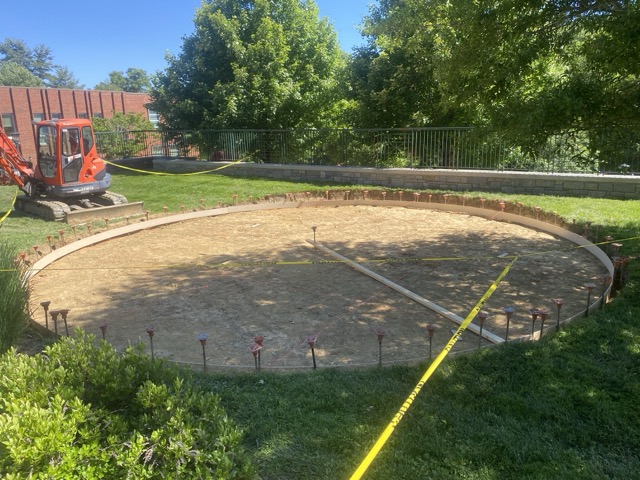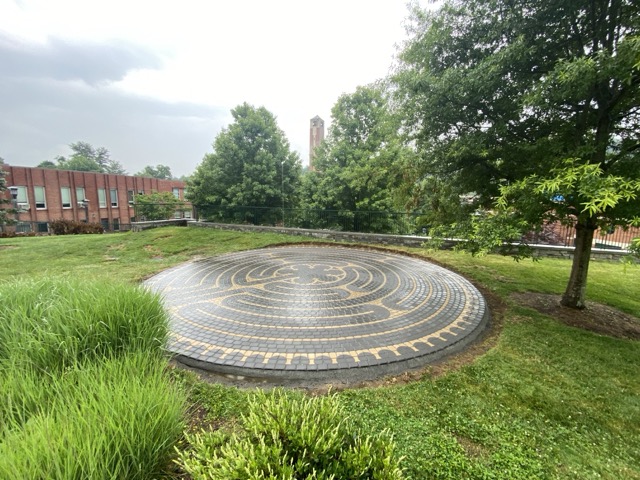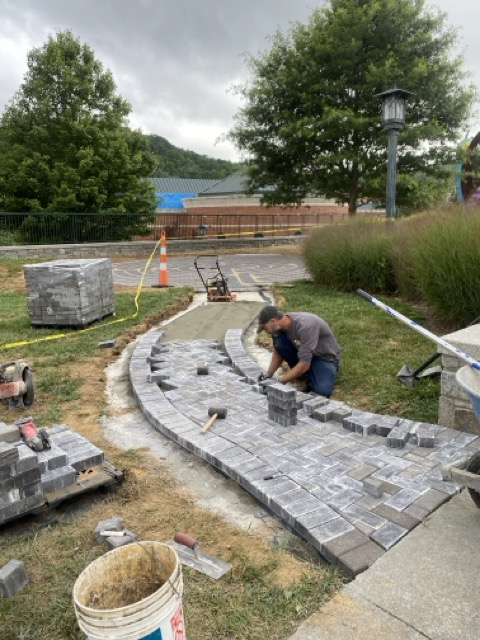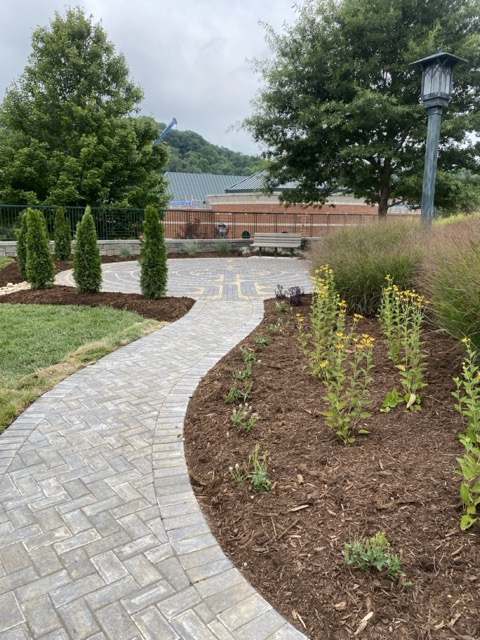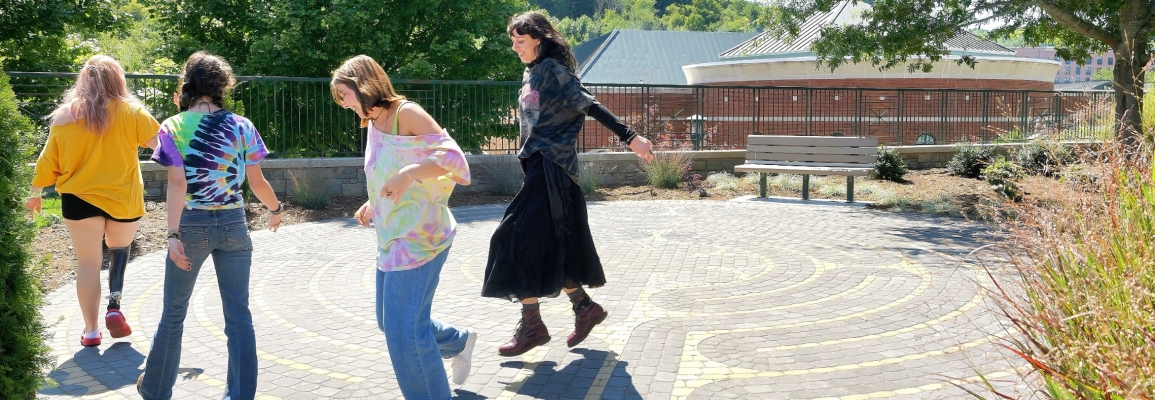What is a labyrinth?
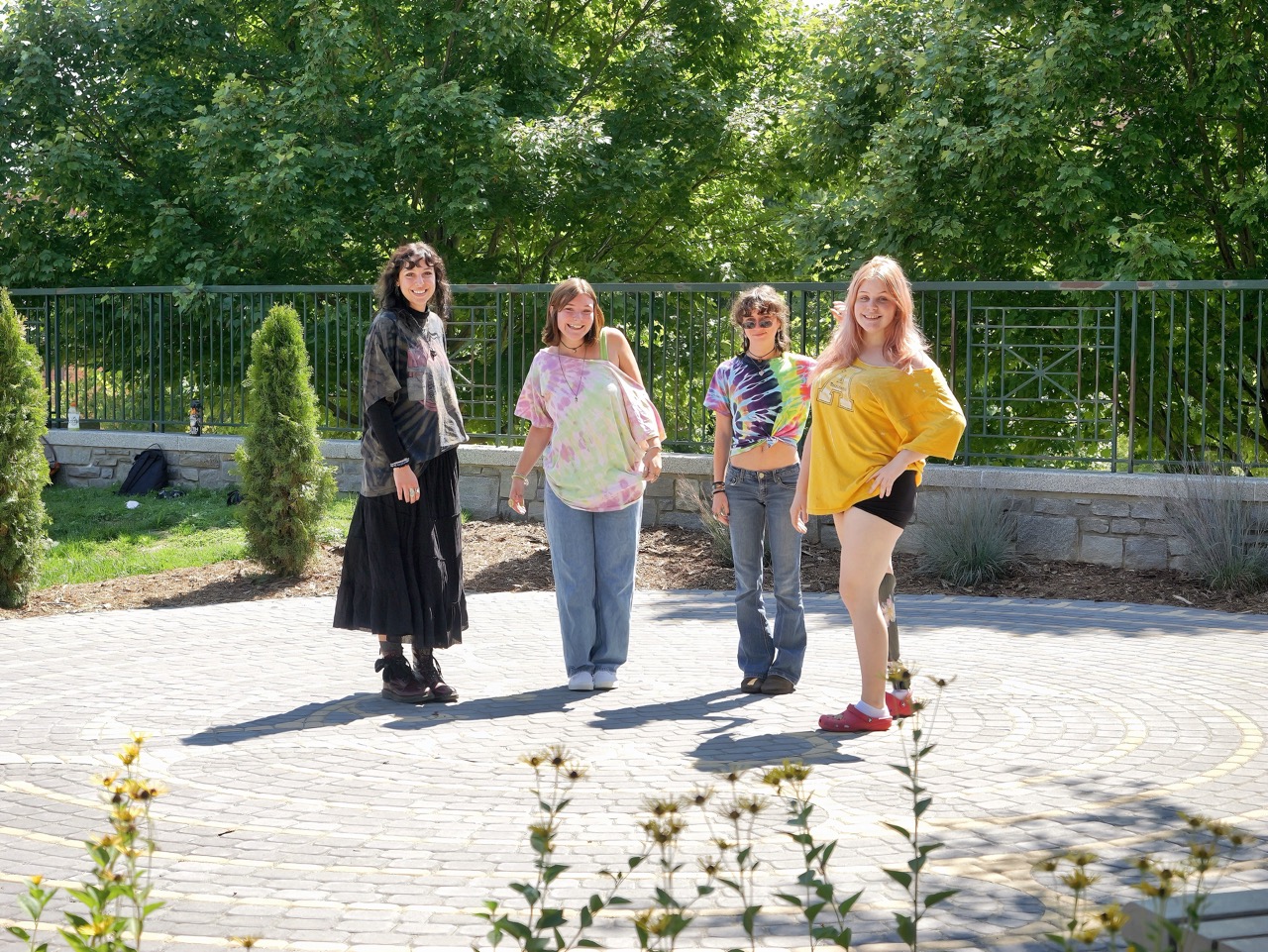
A labyrinth, an ancient, meditative, circular path utilized by diverse groups for centuries. According to the Labyrinth Society, labyrinths date back 4,000 years and have been used for ritual, ceremony, walking meditations, spiritual pilgrimages, and choreographed dances. One of the most famous labyrinths is located in Chartres Cathedral in France. Labyrinths have varied designs, but all designs include a meandering, singular path that leads to the center and back out.
There are many ways to walk a labyrinth. Many choose to walk with an intention, but it is important to also be open to surprises and possibilities! You might walk the same labyrinth 100 times and have a different experience with each walk. Some ideas for walking a labyrinth include:
- Asking a question as you walk towards the center, and be open to receiving an answer as you walk out
- Releasing as you walk in, receiving in the center, and returning as you walk out
- Carrying symbolic items of significance or importance in and out with you
- Walking with members of a group or team
- Focusing your walk on specific equity or sustainability-related topics or populations
- Walking in remembrance of or honor of a person or group
As you walk, please be mindful that others may be walking the labyrinth as well. You may cross paths as you simultaneously walk alone and together.
What is the history of labyrinths at Appalachian State University
We honor the many people who have been involved in the efforts to install labyrinths on campus, including Marianne Adams, Sally Atkins, Karen Caldwell, Jeff Cathey, Christine Dave, Cara Hagan, Marie Huff, Denise Levy, Maureen MacNamara, Linda McCalister, Cathy McKinney, Jordan Perry, Katrina Plato, Susan Reed, Mary Reichel, Melia Snyder, Heather Thorp, and Joan Woodworth.
There have been several efforts for more than twenty years to install a labyrinth on the campus of Appalachian State University. The first labyrinth that we know of at Appalachian State was a temporary labyrinth drawn on tobacco cloth that was used with many small groups and conferences. In 2014, a 24-foot Paths of Peace Canvas Labyrinth was purchased and painted as part of an Expressive Arts and Social Justice Learning Community (supported by the Hubbard Center for Faculty Development, now the Center for Excellence in Teaching and Learning for Student Success). Over the years the canvas labyrinth has been used at Appalachian State University and the surrounding community for multiple gatherings on various themes such as aging, grief, sustainable development, de-stressing at finals week, as part of doctoral research, at the WEILS (Women in Educational Leadership) conference, a dance department class, and the Mindfulness in Higher Education Conference to name a few.
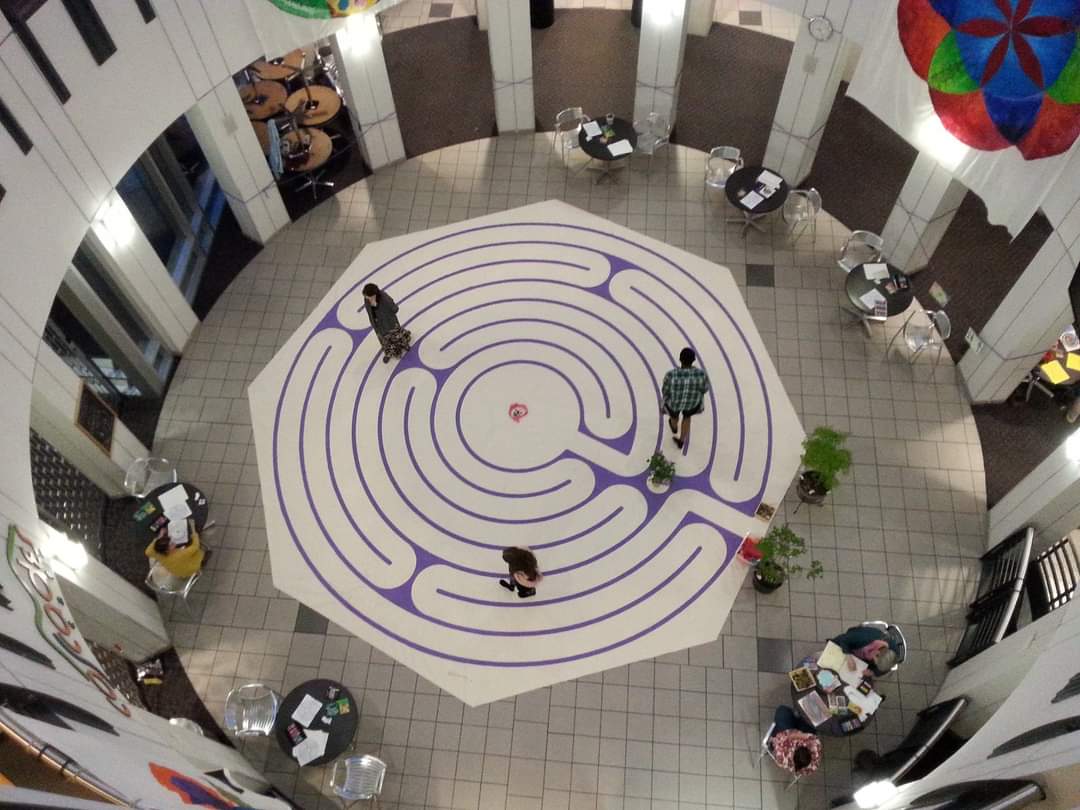
Students, faculty, and staff walk the Paths of Peace Labyrinth for 2015 World Labyrinth Day and in memory of students who died during that academic year.
After the labyrinth was completed and used in the Plemmons Student Center, staff in the Center also purchased a small canvas labyrinth. Likewise, the Belk Library and Information Commons also purchased a small canvas labyrinth.
In 2024, two permanent labyrinths were installed on Appalachian's campus. One was placed near the Plemmons Student Union in the heart of campus. This labyrinth was funded by a grant from the NC Department of Health and Human Service and installed to honor students, staff, and faculty in recovery at Appalachian State University. The second was placed behind Leon Levine Hall of Health Sciences. These labyrinths are part of the Outdoor Wellness Locations (OWLs) Initiative. Started in 2023, the OWLs are designed to carve out space for well-being in underutilized campus locations.
Started in 2023, the OWLs are designed to carve out space for well-being in underutilized campus locations. There is also a permanent outdoor labyrinth at the Blackburn Vannoy Farm that was installed as part of a senior capstone project.
10-minute guided labyrinth walk set to music
We invite you to enjoy this 10-minute guided labyrinth walk, recorded by Denise Levy.
Guided Labyrinth Walk
A transcript of the Guided Labyrinth Walk is also available. Guided Labyrinth Walk Script (PDF)
You are welcome to use the labyrinth on your own or with a group (reserve through 25Live, but if you would like a guided experience, please contact Denise Levy to arrange a consultation.
How do I reserve the labyrinth?
Would you like to reserve the labyrinth for your group, class, or event? Anyone with an Appstate email address can schedule the labyrinth through 25Live.
Where can I find more information?
Visit the Levine Labyrinth Site
Sellers, J., & Moss, B. (2016). Learning with the labyrinth: Creating reflective space in higher education. Palgrave.
Building Sanford Mall's Labyrinth
The process of building Sanford Mall's first Labryinth.
